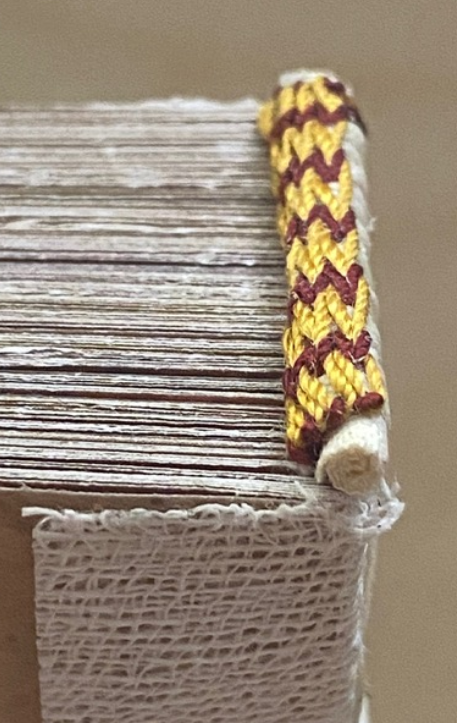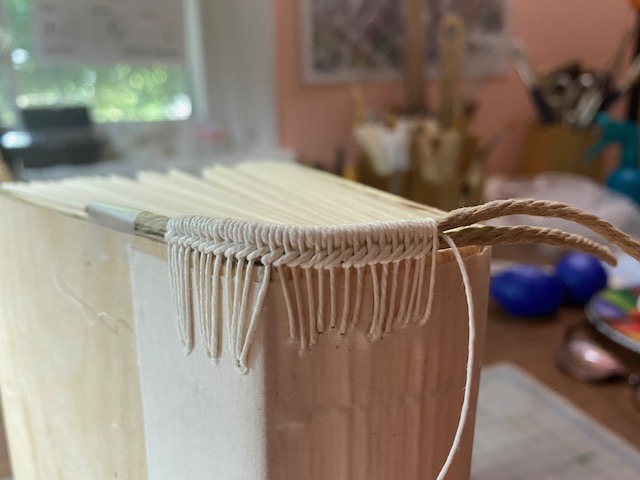A book model under construction. Photo: Shawn Miller.
This article first appeared in the Library of Congress Magazine.
Inside every historical book is a hidden story, one that reveals how the object itself was made.
Conservators at the Library study the construction of ancient volumes in order to learn more about their inner structure and how to better preserve them for future generations.
One way they do so is by building models that let them “see inside” a book’s covers to its invisible or hidden structural components — the board attachments, endbands, fastenings and sewing that hold a book together and allow it to withstand centuries of use.

Detail of a book model. Photo: Shawn Miller.
Books from different regions and eras have unique methods of construction and are built from place-specific materials: A book made in England in the 1400s was not made in the same way as one crafted in Armenia even during the same time period. The textblock and endbands were sewn in distinctive and completely different ways, as well as the board attachment and the decoration.
The models help conservators identify construction methods and materials specific to regions and to identify damage that has been caused over time by use, such as how the boards have become loose or detached, or the sewing or sewing supports have weakened or broken. Then, armed with a better understanding, conservators can chart the best course for treatment.
Tamara Ohanyan of the Library’s Conservation Division has built models of works both from Library collections and those of other institutions: Armenian, Byzantine, European, Persian and Ethiopian bindings as well as bindings of the Nag Hammadi library, a cache of leather-bound, Gnostic Christian texts from the fourth-century that were discovered buried in a sealed jar in Egypt in 1945. You can watch her creating a traditional Armenian endband, step by step, as part of her work. It’s a master class in the art of book preservation.
Subscribe to the blog— it’s free! — and the largest library in world history will send cool stories straight to your inbox.















